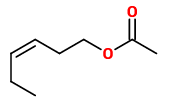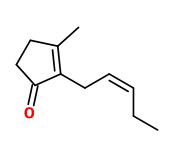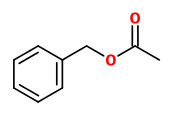Mirabilis jalapa L. - Nyctaginaceae - four o'clock flower, marvel of Peru, Wunderblume
„The flowers usually open from late afternoon or at dusk (namely between 4 and 8 o'clock), giving rise to one of its common names. Flowers then produce a strong, sweet-smelling fragrance throughout the night, then close for good in the morning. New flowers open the following day. It arrived in Europe in 1525. Today, it is common in many tropical regions and is also valued in Europe as a (not hardy) ornamental plant.“ wikipedia
„… we determined the periodicity of the release of volatiles from red and yellow flowering four o'clock plants, Mirabilis jalaba (Nyctaginaceae). The major chemical released from four o'clocks was identified as ocimene. The onset of release occurred between 1400 and 1600 hr and increased with time with maximum amount of ocimene released during 1800-2000 hr, followed by a decrease in emission. No ocimene was detected after 2400 hr.“ Minor components were benzaldehyde and indole e.g.
[Heath, Robert R., and Ara Manukian. „An automated system for use in collecting volatile chemicals released from plants.“ Journal of Chemical Ecology 20.3 (1994): 593-608]
Major components of the fragrance of M. jalapa were (E)-β-ocimene (38.1%) and α-farnesene (37.0%). Minor constituents were (Z)-β-ocimene (1.3%), myrcene (0.5%), nerolidol (0.2%), (Z)-3-hexenyl acetate (3.4%), (Z)-3-hexenol (~0.8%), (Z)-3-hexenyl 2-methylbutyrate (0.4%), (Z)-jasmone (1.3%), methyl benzoate (0.4%), benzyl acetate (5.3%), methyl salicylate (0.5%), benzyl butyrate (0.2%), benzyl alcohol (1.6%), (Z)-3-hexenyl benzoate (0.2%), and benzyl benzoate (3.6%) e.g.
[Levin, Rachel A., Robert A. Raguso, and Lucinda A. McDade. „Fragrance chemistry and pollinator affinities in Nyctaginaceae.“ Phytochemistry 58.3 (2001): 429-440] https://acalert.amherst.edu/media/view/134629/original/Phytochem.pdf
 E-β-ocimene |  (Z)-3-hexenyl acetate |  (Z)-jasmone |  benzyl acetate |
„Among several constituents including (Z)-3-hexenyl acetate, β-myrcene, (Z)-ocimene, and benzyl benzoate, the monoterpene (E)-β-ocimene was the major fragrance component. Fragrance release occurred in a time-dependent manner. The emission of volatiles, including (E)-β-ocimene, showed an evening-specific maximum (1700–2000 pm). The emission of (Z)-3-hexenyl acetate reached its maximum 3 h later.“
[Effmert, Uta, et al. „Volatile composition, emission pattern, and localization of floral scent emission in Mirabilis jalapa (Nyctaginaceae).“ American journal of botany 92.1 (2005): 2-12] https://bsapubs.onlinelibrary.wiley.com/doi/full/10.3732/ajb.92.1.2
Mirabilis jalapa / 3. HBV © Rolf Marschner (2009) www.botanische-spaziergaenge.at
